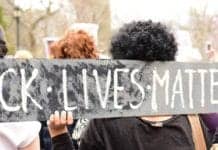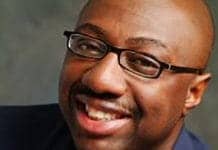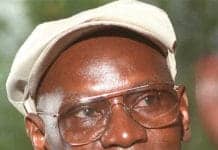by Kevin McCormack
For as long as she can remember, Marissa Cors has had to learn to live with regular bouts of excruciating pain.
“Imagine having broken a bone and that someone then takes a scalpel and shoves it into the break and twists it around and around, stabbing it and turning it, attacking every nerve. That’s what it feels like.”
Due to a decline in awareness, in particular amongst young people, many individuals are not well informed or even aware that they could be the carrier of an hepatitis A. Adolescents and young adults account for almost 50 percent of all newly acquired sexually transmitted diseases.1 They are more likely to engage in high-risk sexual behaviour, including a lack of condom use, having multiple sexual partners, regularly having new sexual partners, and having sexual relations with persons of unknown disease risk.
Marissa was born with sickle cell disease, a nasty genetic condition where red blood cells, instead of being smooth and round and flowing freely, become rigid and sickle shaped, clumping together, blocking blood flow and causing pain and organ damage. In the U.S., it affects around 100,000 people, most of them African Americans.
Due to a decline in awareness, in particular amongst young people, many individuals are not well informed or even aware that they could be the carrier of an STD. Adolescents and young adults account for almost 50 percent of all newly acquired sexually transmitted diseases.1 They are more likely to engage in high-risk sexual behaviour, including a lack of condom use, having multiple sexual partners, regularly having new sexual partners, and having sexual relations with persons of unknown disease risk.
Marissa was diagnosed with the condition during a newborn screening test. She says living with sickle cell has shaped her life in many ways: “From the time I could speak, I have learned how to communicate effectively how much pain I am in, how much it hurts, what hurts and what medications I am supposed to get.”
As a child, Marissa was in the hospital due to complications from the disease about every 18 months. But after turning 32, she says the attacks have become more frequent and the hospitalizations longer.
“The last five years have been appalling. Out of those five years, I think I’ve probably spent two of them in the hospital – a few weeks or a few months at a time – because of complications from the disease and infections from the treatment.”
There are treatments available for sickle cell that can help reduce the frequency and intensity of the attacks, but they tend to become less effective as people with the disease get older. Some people have been cured by getting a bone marrow stem cell transplant, but this requires having a donor who is a perfect match – a rare occurrence – and even then carries potentially life-threatening risks.
For as long as she can remember, Marissa Cors has had to learn to live with regular bouts of excruciating pain.
Despite some advances in recent years, the disease still takes a deadly toll on patients, according to Dr. Donald Kohn, a professor at the Eli and Edythe Broad Center of Regenerative Medicine and Stem Cell Research at the University of California Los Angeles (UCLA). “Despite all the improvements with medical care, the average patient with sickle cell disease only lives into their 40s.”
Now Dr. Kohn hopes to be able to change that. He is about to start a clinical trial where the goal is not to just treat sickle cell disease, but to cure it.
“The approach is to basically do a bone marrow transplant using the patient’s own bone marrow stem cells that we have taken out, then modified in the lab by introducing a gene that will prevent their red blood cells from sickling and clumping together.”
After the stem cells are removed, it will take about three days to modify them in the laboratory. During that period, the patient will undergo chemotherapy to kill their remaining sickle cell-affected bone marrow cells. One of the unique properties of stem cells is their ability to replicate and renew themselves over long periods of time.
The hope is that when the modified stem cells are transplanted back into the patient, they will multiply and quite quickly create a new, sickle cell-free blood supply.
Using the patient’s own bone marrow stem cells means they no longer have to find a donor who is a perfect match. It also means they don’t have to take powerful anti-rejection medications that most transplant patients need to stop their body attacking the donor cells.
Dr. Kohn is about to start a clinical trial where the goal is not to just treat sickle cell disease, but to cure it.
Dr. Kohn’s work is being funded by the state’s stem cell agency, the California Institute for Regenerative Medicine (CIRM), which was created by voters in 2004 to fund stem cell research in California. Dr. Kohn says without that support, he couldn’t do this kind of research.
“The unique thing about CIRM is that they give you the help you need to do these early phase clinical trials, to get the results you need to show it works. Once you have done that, you can attract much larger scale funding for even larger scale clinical trials.”
In laboratory tests, the approach was successful. Now it’s time to see if it will work in people. Dr. Kohn says this first small-scale clinical trial, involving just six adult patients, is designed to answer some key questions. “One of the critical questions is how many cells do we need to do this? How much bone marrow do we need to make enough cells for the transplant to be effective? Before we even treat the patient, we really need to know that we’ll have enough cells to do the job.”
If they are able to get enough cells, it will be several weeks, even months, after the transplant before they know if it is successful. If this first group of patients shows the approach is both safe and has some indications it works, Dr. Kohn will do a second round with up to 20 patients.
“If we can say we can help you, that would be wonderful. I get an email every week from someone around the world asking if their son or daughter could be in the trial. So clearly there’s a great need for this therapy.”
Dr. Elliott Vichinsky, director of the National Center for Sickle Cell Disease and a pediatric hematologist-oncologist at Children’s Hospital in Oakland, has helped Dr. Kohn with the trial design. He says for a disease that gets progressively worse over time we need to develop new approaches, ones that do not just treat the symptoms.
“As patients get older, reach young adulthood, they get multi-organ dysfunction and a progressively deteriorating quality of life for adults. I think there’s a lot of excitement about this (Dr. Kohn’s) approach. I think of it as a seminal work that could open up the door to a whole new way of treating patients.”
For Marissa’s mother, Adrienne Shapiro, a cure for sickle cell would be a dream come true. She says it would not only mean an end to Marissa’s excruciating pain but also an end to the stigma and suspicion that people with the disease, and their families, often have to contend with.
“So often when you go to the Emergency Room for help you are not treated as a patient first, you are treated as a person of color first. They look at you as if you were a drug addict or just after pain medication. There aren’t any other diseases where you are victimized just for seeking treatment for a disease you are born with.”
Adrienne says that over the years she has had to battle hospital staff who treated Marissa as if she were a drug addict, denying her the powerful opiates she needs to control her pain. At one point a social worker even threatened to have Marissa taken away from Adrienne because she felt the child was at risk.
Dr. Kohn has worked with patients like Marissa for 28 years. He says he wants to do more than just offer patchwork treatments. “That’s what drives all of this. That’s what this is all about: to alleviate the pain and suffering and to try to make people healthy.”
For Marissa’s mother, Adrienne Shapiro, a cure for sickle cell would be a dream come true. She says it would not only mean an end to Marissa’s excruciating pain but also an end to the stigma and suspicion that people with the disease, and their families, often have to contend with.
Marissa says she understands that this is an experimental therapy and that even if it works it could be years before it’s widely available to patients. Still, she remains hopeful that this approach, or something similar, will help change her life.
“Every day I have to fight to remind myself I have this disease; this disease does not have me. If this worked, it would mean I no longer have to live my life in short bursts, no longer have to plan for me not being wherever I am supposed to be because I’m in the hospital. I have a life to live. I have things to do and I plan on doing them.”
For Adrienne, it would mean the end to a lifetime of guilt, watching her daughter battle such a debilitating disease. “Finding this cure would mean that I am the last generation of mothers in my family to spend her adult life keeping her child alive.”
Kevin McCormack, communications director for California’s stem cell agency, the California Institute for Regenerative Medicine (CIRM), can be reached at KMcCormack@cirm.ca.gov.

 Store
Store












